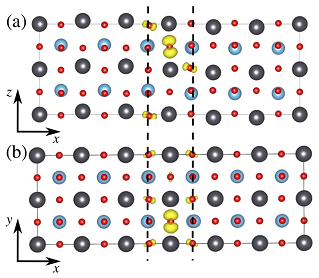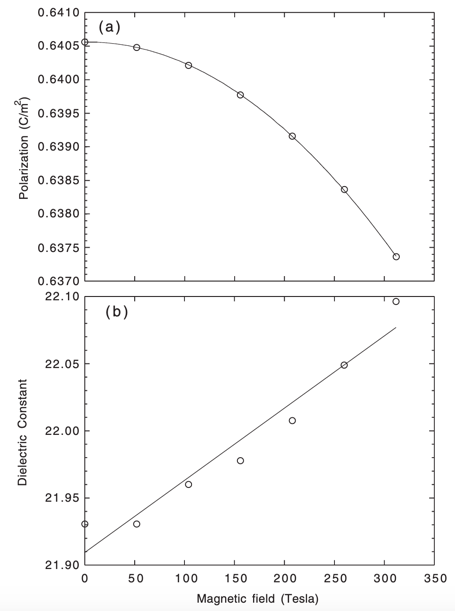Ferroic materials present at least one "ferroic" long-range order that can be controlled by external fields. They thus exhibit significant potential for real life critical applications. For instance, a class of ferroic materials are the so-called ferromagnets, which harbor a spontaneous magnetization that can be controlled with external magnetic fields, and is used in many types of computing memories. Another class of such ferroic materials are called ferroelectrics; they possess a spontaneous electrical polarization which can be controlled by electric fields. DFT is a powerful tool to understand the structural, electronic and functional properties of those materials. It has become such a reliable method that it is now used to predict the properties of a physical system. Our group focuses on the application of DFT to understand, predict, and engineer materials with tailored functional properties for today and tomorrow's technologies.
As steps in these directions, we focus on:
- The response function of ferroic materials to external stimuli: mechanically-, electrically- or light-induced phase transitions, mechanical deformation under electric fields (piezoelectric effect) for actuators and sensors applications; optical response to applied electric fields or mechanical deformations (electro- or elasto-optic effects) and conversely (photovoltaic and photostriction effects) [C. Paillard et al., Phys. Rev. Lett. 116, 247401 (2016)] for optoelectronic applications; the design of tomorrow's magnetoelectric materials, which allow cross-control of magnetic/electric order by electric/magnetic fields [I. A. Kornev et al., Phys. Rev. Lett. 99, 227602 (2007)], towards computing applications.
- The impact of structural defects on the functional properties of ferroic materials [C. Paillard et al., J. Phys: Cond. Matt. 29, 485707 (2017)].
Figure 1 : Small hole polarons are attracted at extended defects called domain walls in lead titanate (see C. Paillard et al, J.Phys.Cond.Matt.29,485707 (2017)

Figure 2 : The electrical polarization (a) and dielectric constant (b) are tuned by an applied magnetic field in bismuth ferrite according to DFT calculations performed by Kornev et al. in Phys. Rev. Lett. 99, 227602 (2007)


